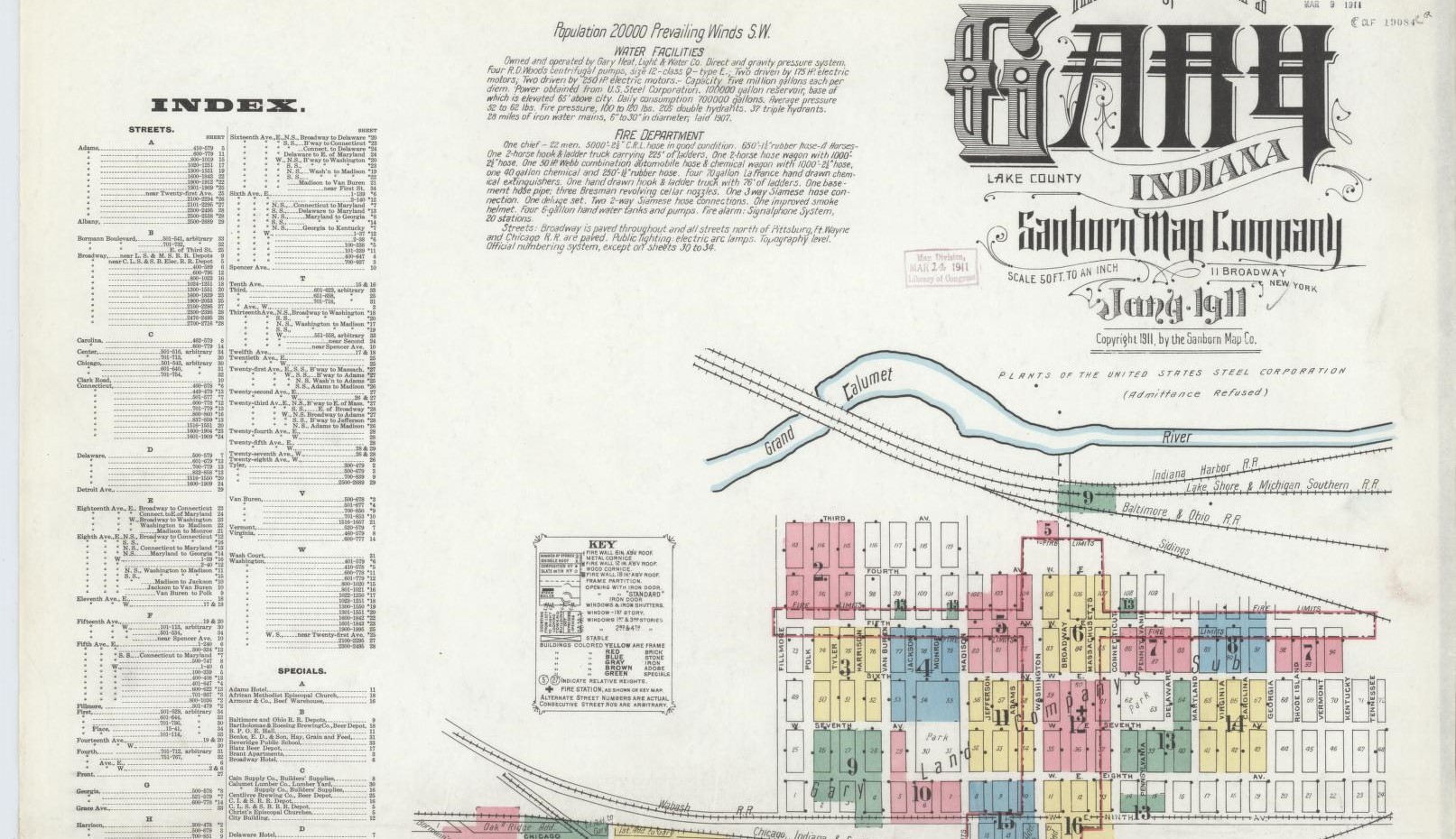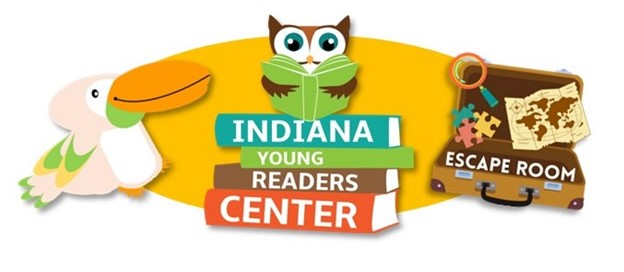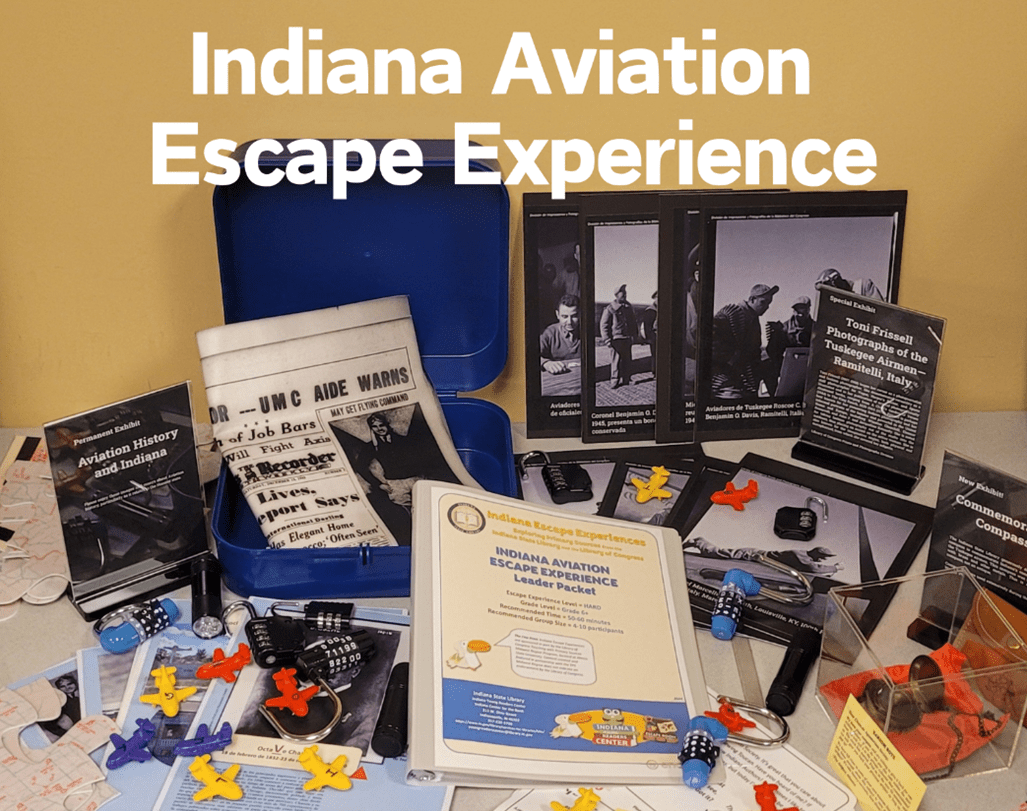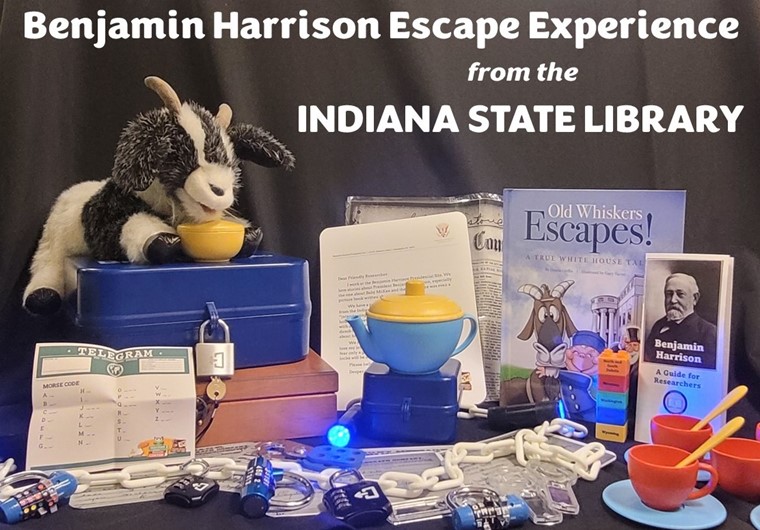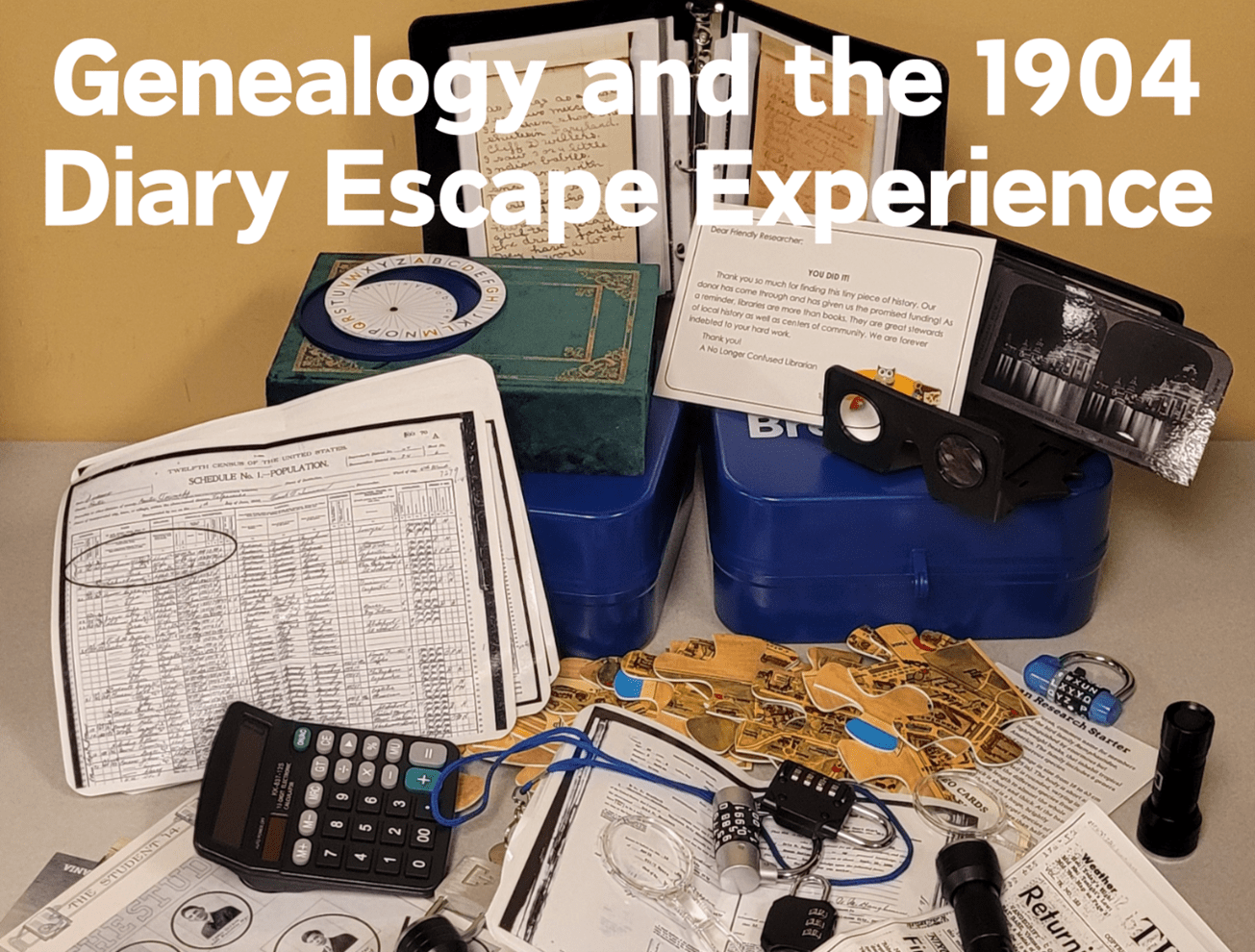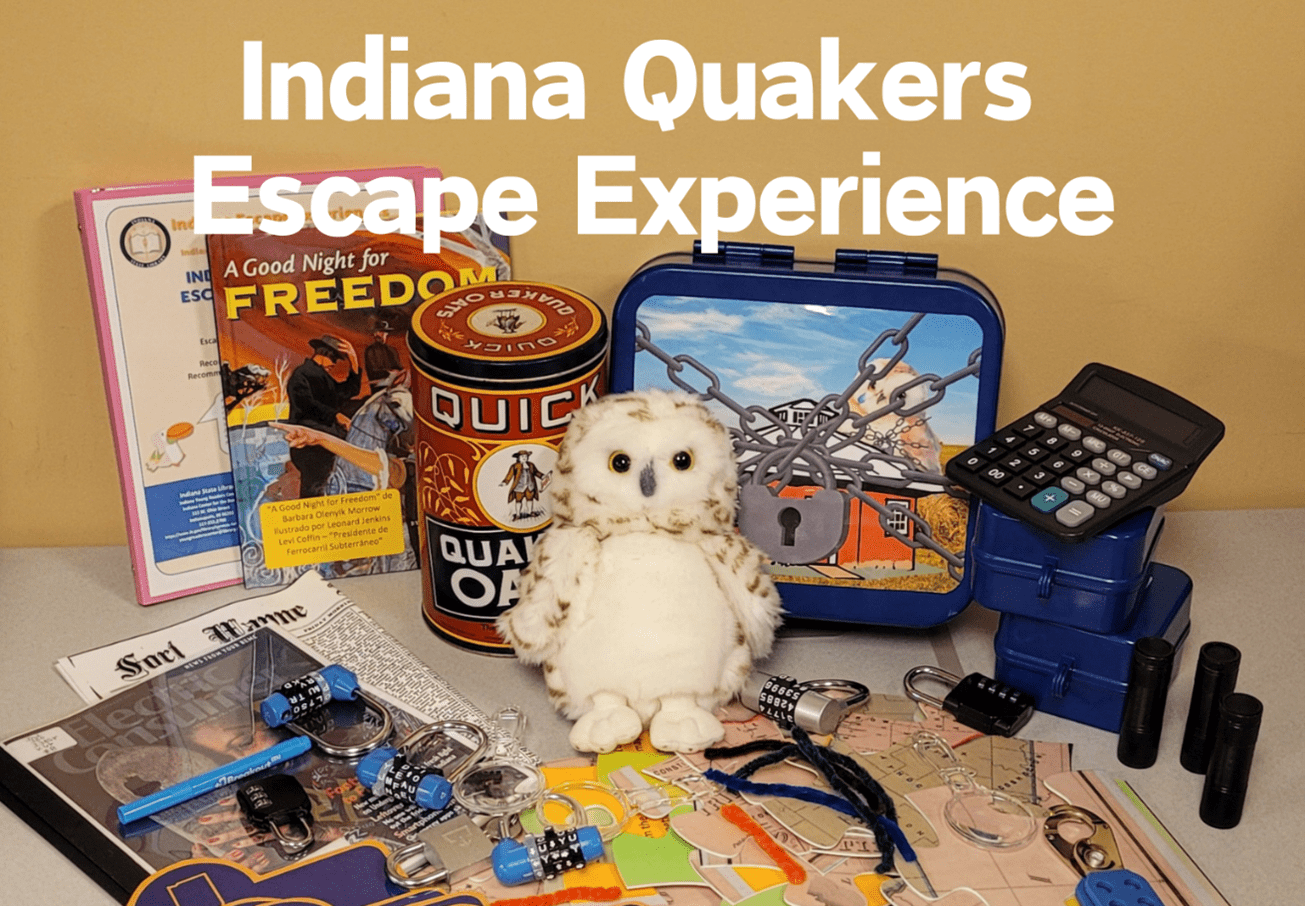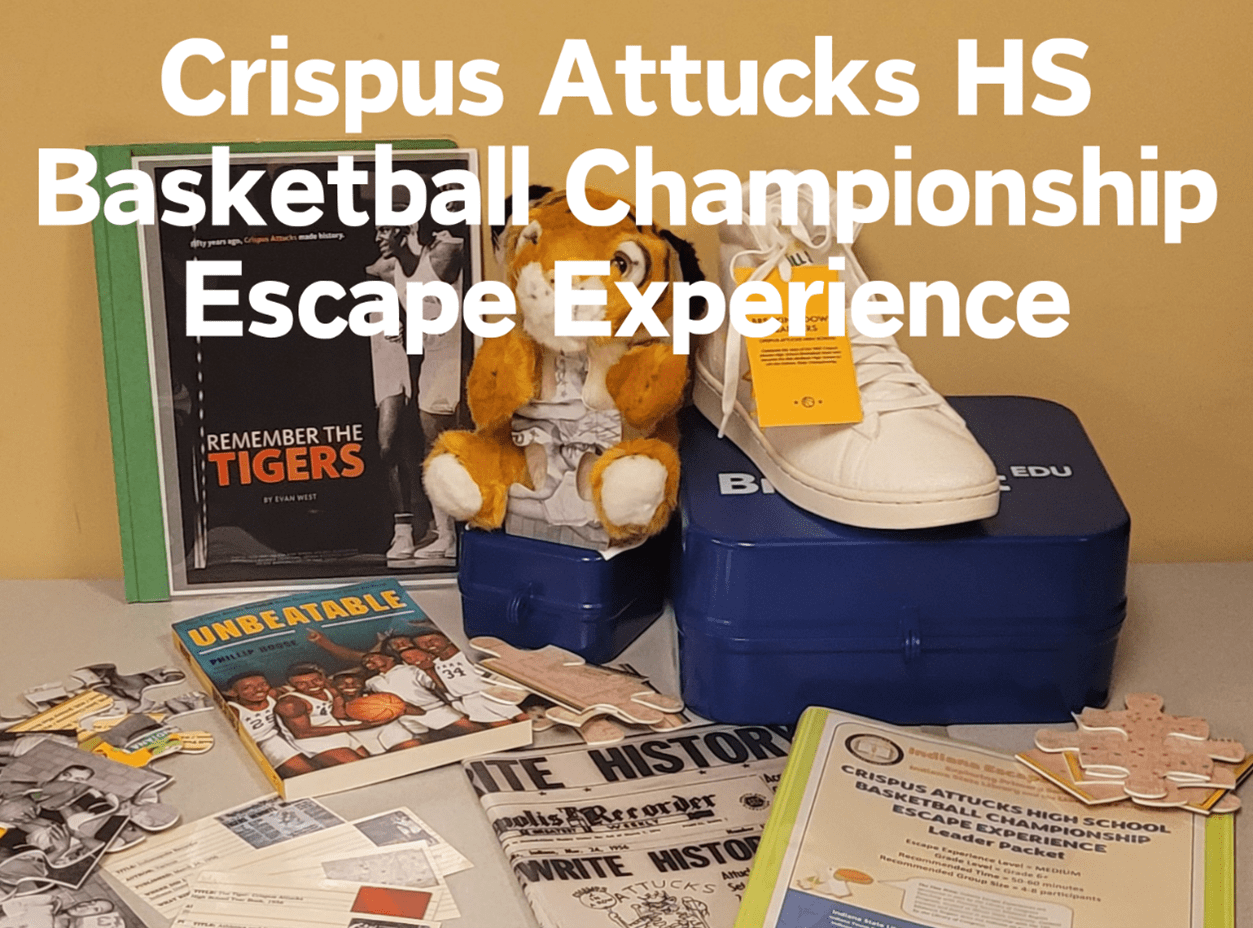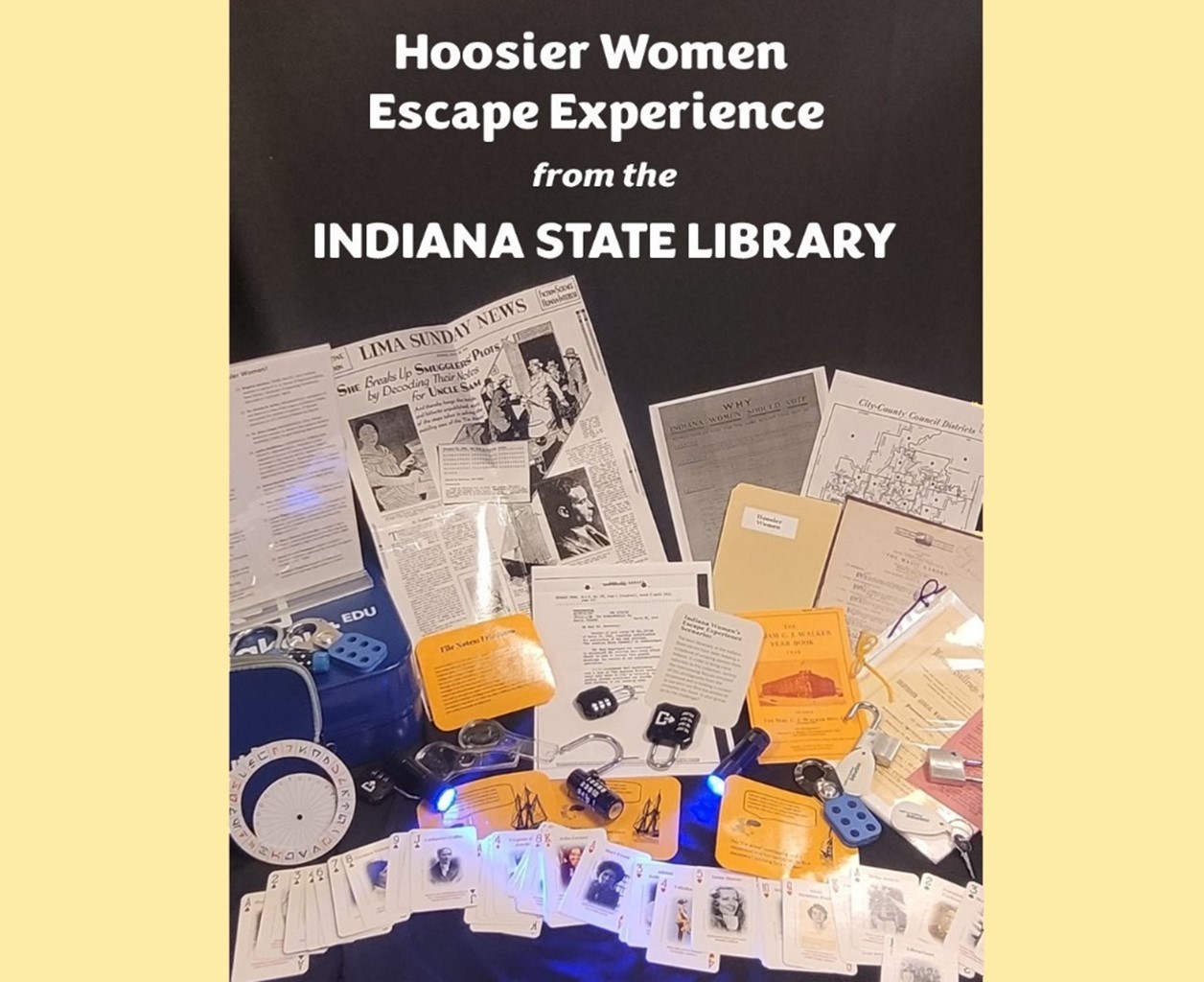This article was written by TPS Consortium member Suzanne Walker, a regional grantee with the Indiana State Library's Young Readers Center and Center for the Book.
Teachers and librarians are busy. I know because I used to be a youth services librarian in a medium-sized public library here in Indiana. It was not uncommon for me to host three to five programs a day while also attending management meetings, doing outreach to schools, working through piles of “problem items” (a book chewed up by a pig in one case), drafting social media posts, taking care of library pets, supervising volunteers, and many, many other tasks. I wanted to consistently offer unique, enriching, and popular programs to my community but sometimes I was frankly too depleted to come up with anything new. The burnout is real.
I now work at the Indiana State Library in the Indiana Young Readers Center where one of my tasks is to offer support to Indiana’s public librarians, a job I love because I know exactly how it feels to cry in despair because summer is only a month away and your car just burned down on the highway with a trunk full of summer reading supplies. Yes. This really happened to me! My goal now is to provide public librarians with resources that will save them time and allow them to consistently offer unique, enriching, and popular programs to their communities, thereby combatting burnout and despair. It’s a tall order, but a recent Teaching with Primary Sources Grant has helped me do just that.
Indiana’s Escape Experience kits for public libraries were born from a kernel of an idea: I wanted to be able to offer programs in a box that checked a lot of (a-hem) boxes. To be successful my kits needed to do the following:
🗹 Fit in a box (allowing them to circulate through our existing courier service).
🗹 Be related to the Indiana State Library’s collections in some way (a requirement given to me by my supervisor).
🗹 Consist of supplies that, by and large, did not need to be frequently replaced.
🗹 Serve a wide variety of older ages with the hope that they could be used multi-generationally or with families (we already had storytime kits for younger audiences).
🗹 Encourage partnerships.
🗹 Be grant funded.
Coincidentally, right when I was thinking about all of this, my stepchild was REALLY into Escape Rooms, AND I heard about TPS regional grants. Voilà. There was my answer: Escape Experiences in a box designed for middle school students and up based on Indiana history and featuring primary source documents from our collections here at the Indiana State Library and collections from the Library of Congress all created with support from a variety of partners. Now all I had to do was draft a proposal, write a grant, get the funding, hire some writers, reach out to partners, purchase all the locks and boxes, identify great primary sources that would fit with our narratives, print and process ALL THE THINGS, and promote the whole program to Indiana’s public librarians. Easy, right? I’ll let you be the judge.
Here are a few challenges I ran into over the course of creating our program:
- It’s hard to write escape experiences. I hired three writers to help me, and they had varying levels of success ranging from creating a mostly (but not entirely) workable narrative, to giving up completely. In the end I had six narratives, three of which I wrote on my own (many tears and gnashing of teeth) and three of which were supported by writers I hired.
- It’s tricky to make bilingual escape experiences. This was important to me because Indiana’s Spanish speaking populations are growing. One of our experiences includes a book about the history of Indiana basketball, but the book has not been translated into Spanish, so that wouldn’t work for a bilingual experience. Eventually I identified two of our six narratives that were most conducive to translation.
- It was challenging to find the driving purpose behind each experience. Why would people be racing against a clock to unlock locks in the first place? I needed a villain to vie against our participants. Luckily, I know (quite intimately) Sammy the Interviewing Toucan, a cheeky bird puppet who interviews Indiana authors, sometimes with a little bit of attitude. Sammy became the villain in most of the escape experiences.
- Once I started testing the narratives, it became clear to me that the concept worked, however, giving the librarians all the information they would need to successfully implement the program without me being there to tell them how it all worked would be essential. Ultimately, I wrote extensive Leader Packets outlining the flow of the experiences and explaining how all the puzzles worked. Those packets were uploaded onto a closed portal that librarians could access using a secret code (if you want the code, shoot me an email!). To be extra sure everything was clear, I added videos to the portal (so much filming) explaining each narrative and all the puzzles.
Happily, it has all worked out. We created four copies of each of the six narrative kits for a total of 24 kits. We worked with tons of partners to make it all possible including the Benjamin Harrison Presidential Site, the Chanute Aquatorium Society located in the Gary Aquatorium, and the Hamilton East Public Library whose teen department helped us test all of the experiences with actual teenagers. We did a soft launch of the program in late December of 2024, and we’ve been shipping kits across Indiana ever since. We’ve had 47 checkouts since we started the program, with 40 reservations in the pipeline for future circulations, reaching 45 of Indiana’s 92 counties and all of our Congressional Districts. To date, well over 400 participants have completed at least one of the experiences, many of whom were families or small groups.
This is what our public librarians have to say about the program:
- “Such a great variety of codes, and the "ah-hah!" moments when teams figured something out were so much fun to witness!”
- “The group was confused by the newspaper because they had never used a newspaper before, but this added to the learning experience.”
- “The puzzles were all so creative! They made the students think and use their brains. When they figured them out, they were so proud of themselves as a group and individually.”
- “Some of the participants took time afterwards to read through the diary. They were in awe that this scenario revolved around a real person from Indiana.”
- “The Teen Advisory Board (kids ages 13-18) was so excited, they are going to partner with our local museum to create their own local history escape room.”
- “EXCELLENT! Start to finish. Makes it so easy as a librarian to run a top-notch program with an experience (escape room) that is often out of the price range or driving distance of small-town residents. THANK YOU so much for putting this together!”
One of my favorite parts of the whole experience was selecting the primary sources to include in the kits. There were many letters written to and from Octave Chanute and the Wright brothers available in the Library of Congress’s collections. Before undertaking this project, I had never heard of Octave Chanute, “the grandfather of aviation.” He tested gliders near Gary, Indiana before the Wright brothers did their first flight, and he supported their research through copious consultations. We used seven letters from the Library of Congress’s collections as one component in our Indiana Aviation Escape Experience.
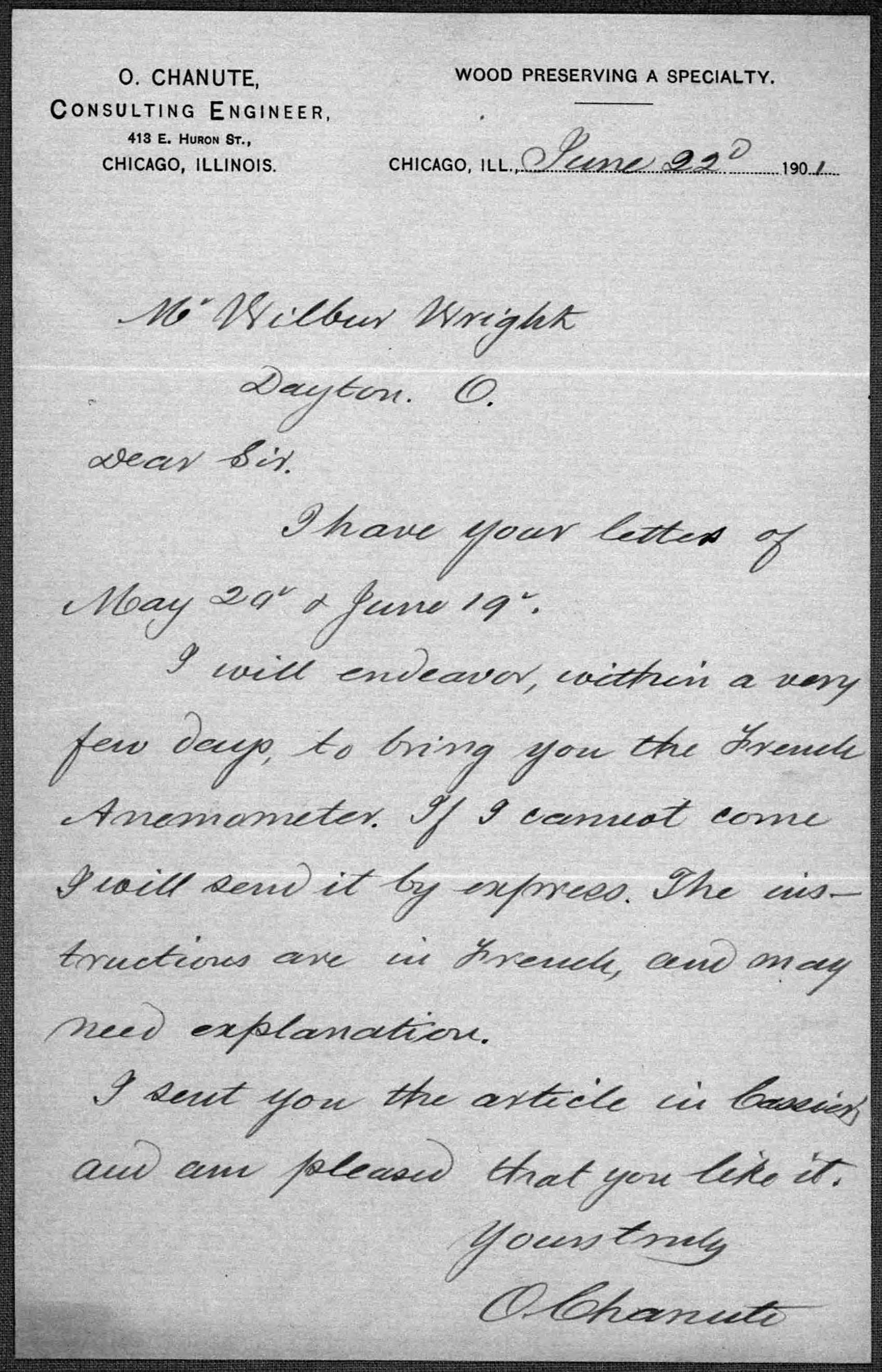
General Correspondence: Chanute, Octave. 1901. Manuscript/Mixed Material. Retrieved from the Library of Congress. www.loc.gov/item/wright002401/
The Indiana State Library owns a diary written by Iris Baughman when she was nine years old and living in Rensselaer, Indiana. Iris visited the St. Louis World’s Fair in 1904 and wrote all about it in her diary. In one of our escape experiences, Sammy the Interviewing Toucan has stolen the diary and locked it away so that only someone who truly knows Iris (and genealogical records associated with her) will be able to solve the puzzles and find the diary. For this experience, we leaned on several Library of Congress resources including the St. Louis World’s Fair Pharus-map from 1904 as well as many stereo cards from the fair. I was even able to acquire OWL Stereoscopic Viewers to include in this kit so that participants could interact with the stereo cards.
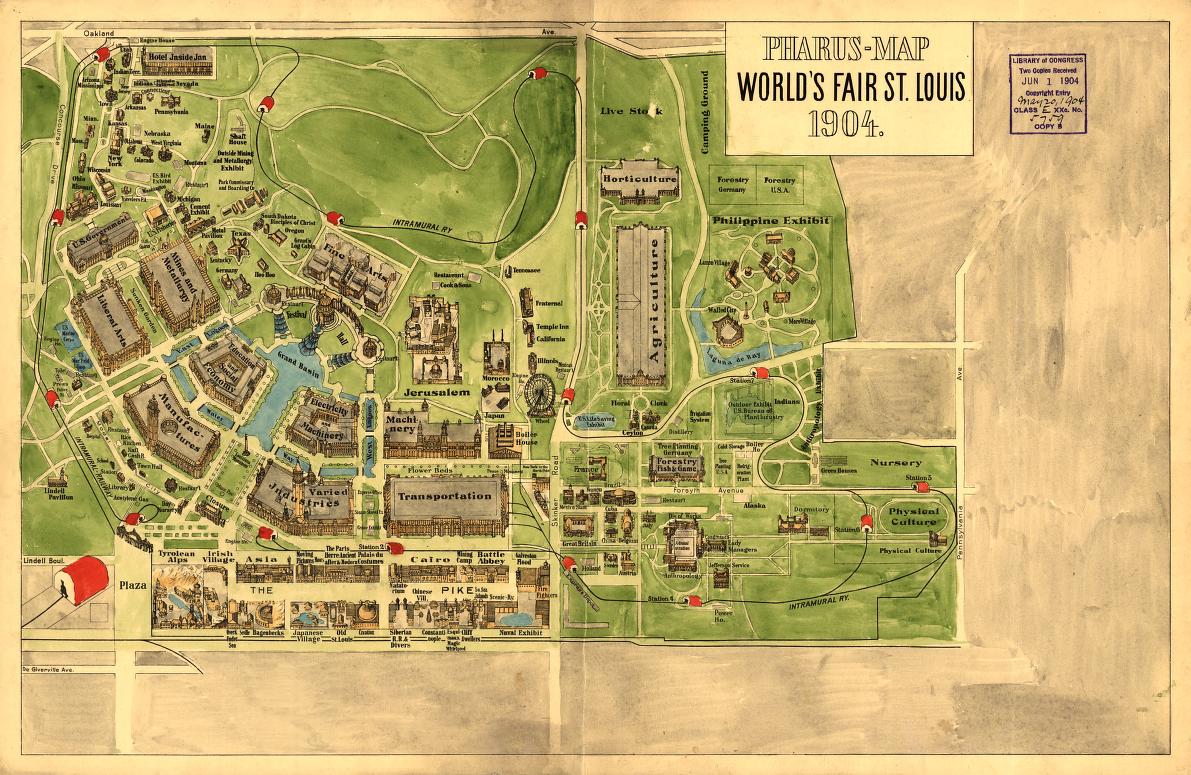
Pharus. Pharus-map World's Fair St. Louis. [S.l, 1904] Map. Retrieved from the Library of Congress, <www.loc.gov/item/99466762/>.
For the Amazing Hoosier Women Escape Experience, there were so many amazing women, that I created an entire deck of cards, including a card for Mrs. Mary Crane of Mitchell, Indiana, whose photo I found in the Library of Congress’s photographs collection.
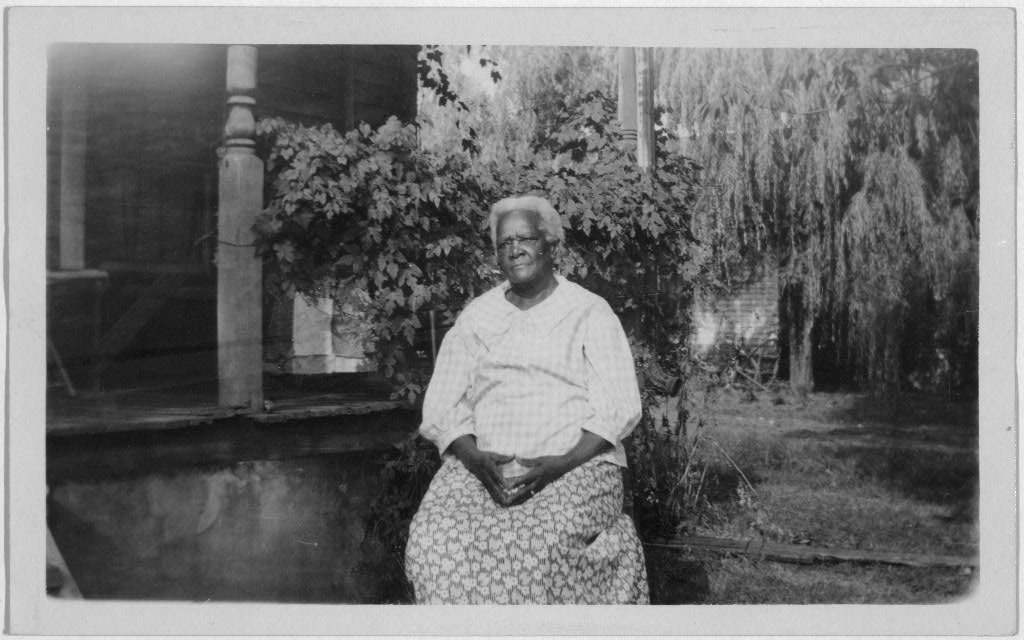
Mrs. Mary Crane - 82 yrs. old ex-slave, Mitchell, Ind. [Between 1937 and] Photograph. Retrieved from the Library of Congress, <www.loc.gov/item/99615220/>.
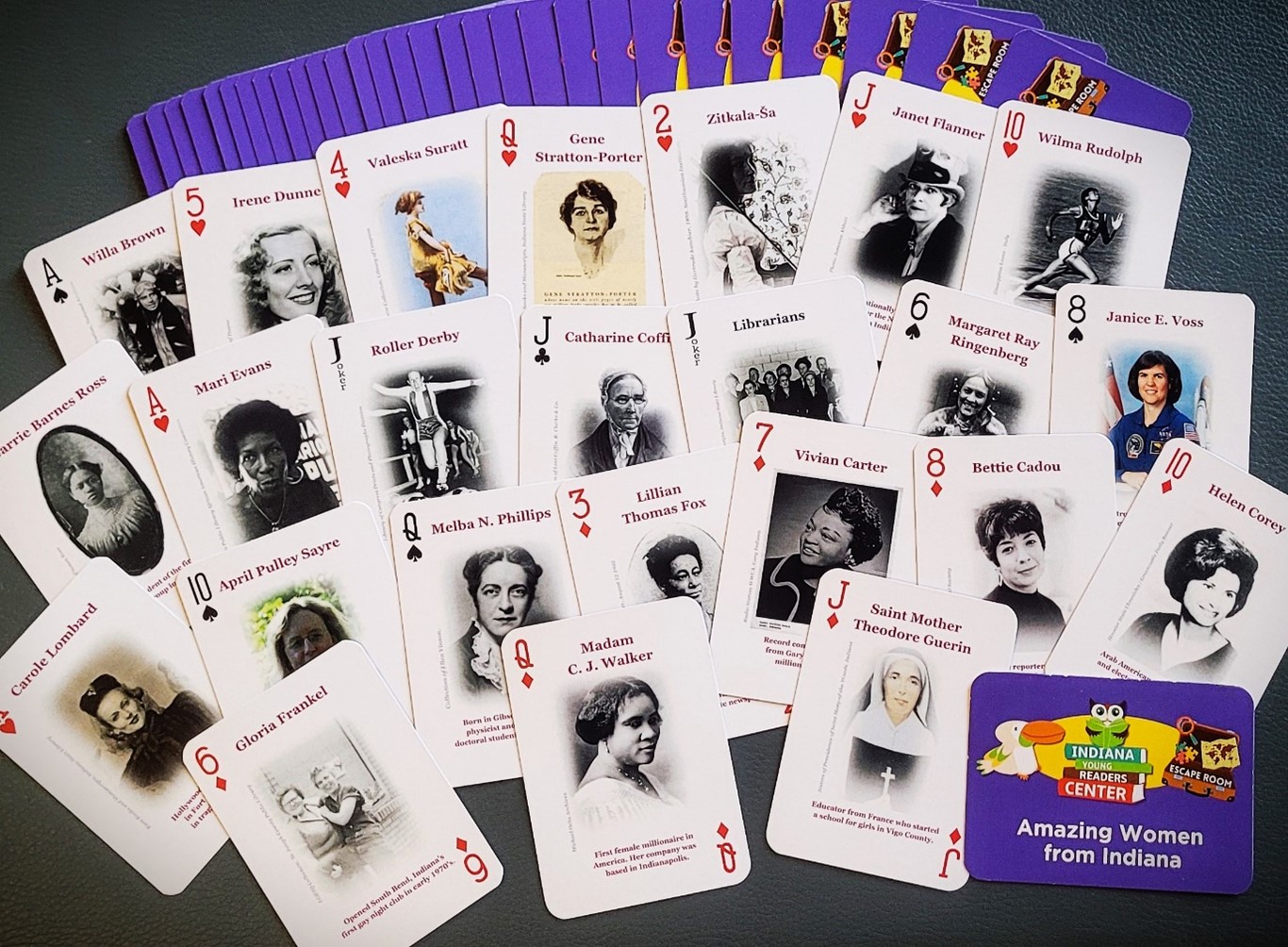
Photo taken by Suzanne Walker - 5/16/2025
All in all, it’s been a fascinating project. I learned so much about Indiana history. I was able to deepen existing partnerships and create new ones. I delved into the Library of Congress’s collections and the collections of the Indiana State Library to find true treasures, including a map of the yearly meeting of the Friends (Quakers) in Indiana and parts of Ohio from 1853. (I made a huge floor puzzle from this map to include in our Indiana Quakers Escape Experience.)
-
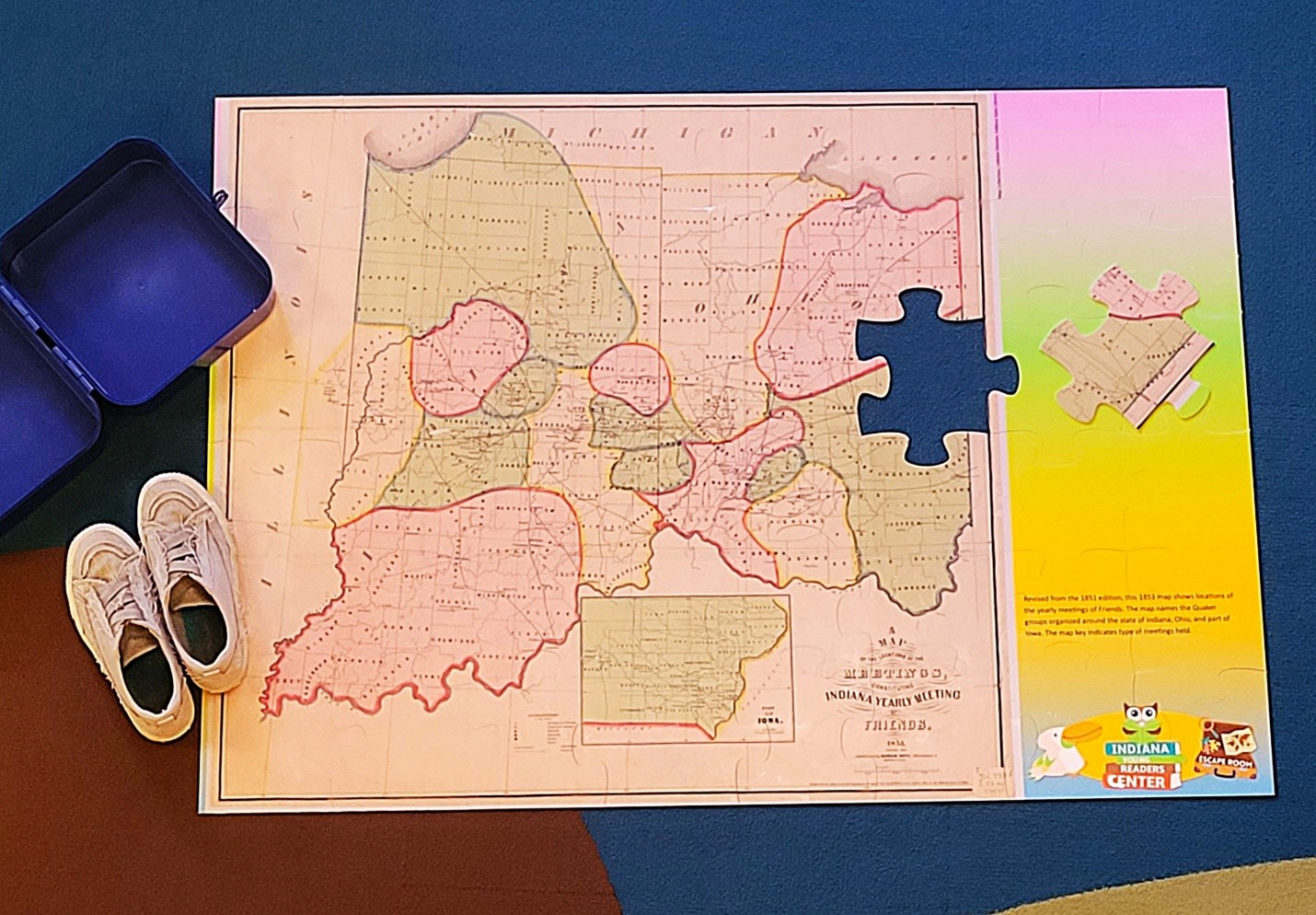
Photo taken by Suzanne Walker - 5/16/2025 – Shoes included for scale.
That said, this project was a TON of work. Truthfully, if I had to do it again, I would probably opt for four narratives, instead of six, but then I’d have fewer kits and I’d get fewer comments like this one, from a school librarian here in Indiana:
“These kits are such an AMAZING resource for me as a school librarian. It is hard to get the older students excited about coming to library class and to keep them engaged. These kits give me interesting and engaging things for them to come into the library and be excited about. They work together and enjoy finding the answers as a group. The kits are so well organized and easy to use. They are minimal set up and clean up. Such a great resource to have! Thank you for taking the time to put these together and to lend them out to schools and libraries.”
I was incredibly delighted to get the above comment as it so clearly illustrates how helpful the kit was for this librarian and how the kits did exactly what I hoped they would do. That makes the work (months and months of it) completely worth it.
For more information, feel free to email me at suwalker@library.in.gov or visit our LibCal website, where you can book a kit if you happen to work in a public library or school in Indiana: https://isl.libcal.com/reserve/equipment/bookclubkits.
